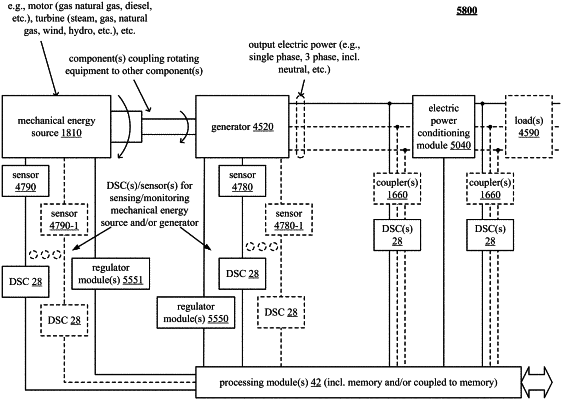| CPC G05B 15/02 (2013.01) [H02P 23/14 (2013.01)] | 20 Claims |

|
1. A rotating equipment system with in-line drive-sense circuit (DSC) electric power signal processing, the rotating equipment system comprising:
a rotating equipment operably coupled to receive a motor drive signal, wherein, when enabled, the rotating equipment configured to operate based on power delivered via the motor drive signal; and
an in-line drive-sense circuit (DSC) operably coupled to receive an input electrical power signal and to generate the motor drive signal, wherein, when enabled, the in-line DSC operably coupled and configured to:
process the input electrical power signal to generate the motor drive signal;
output the motor drive signal to the rotating equipment via a single line and simultaneously to sense the motor drive signal via the single line;
based on the sensing of the motor drive signal via the single line, detect an effect on the motor drive signal that is based on an electrical characteristic of the rotating equipment;
generate a digital signal representative of the electrical characteristic of the rotating equipment; and
perform one or more adaptation operations on the motor drive signal based on a determination to perform adaptation of the motor drive signal.
|